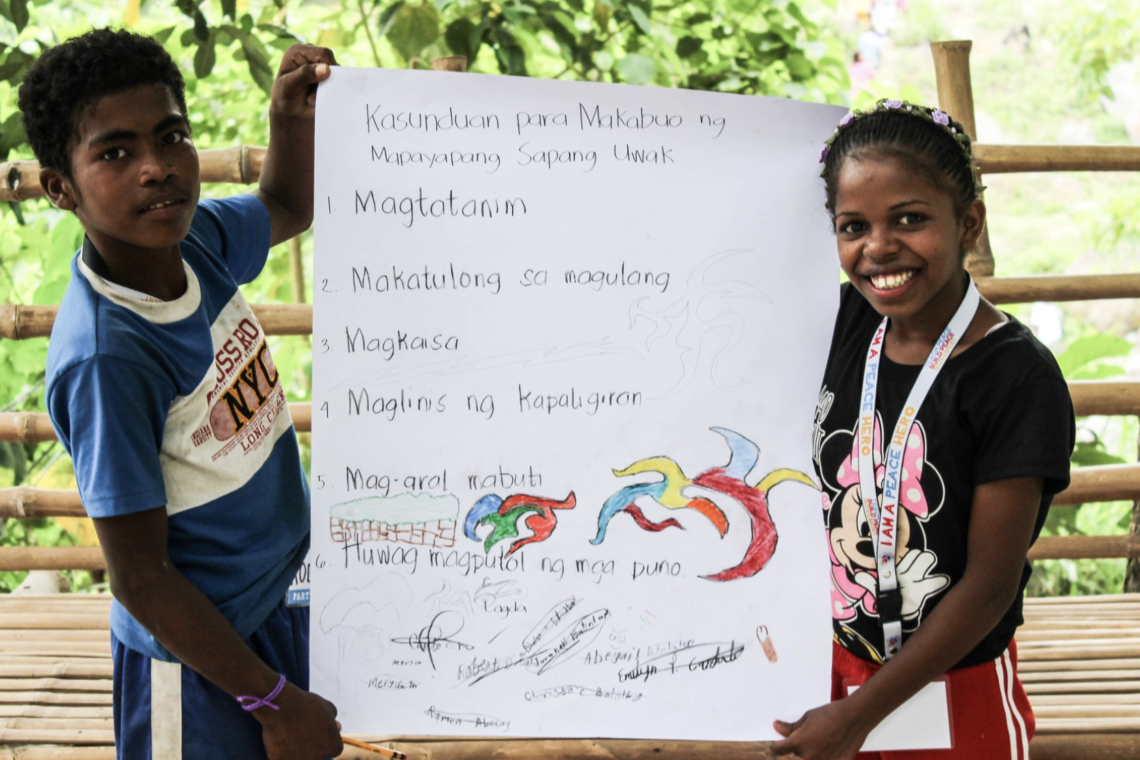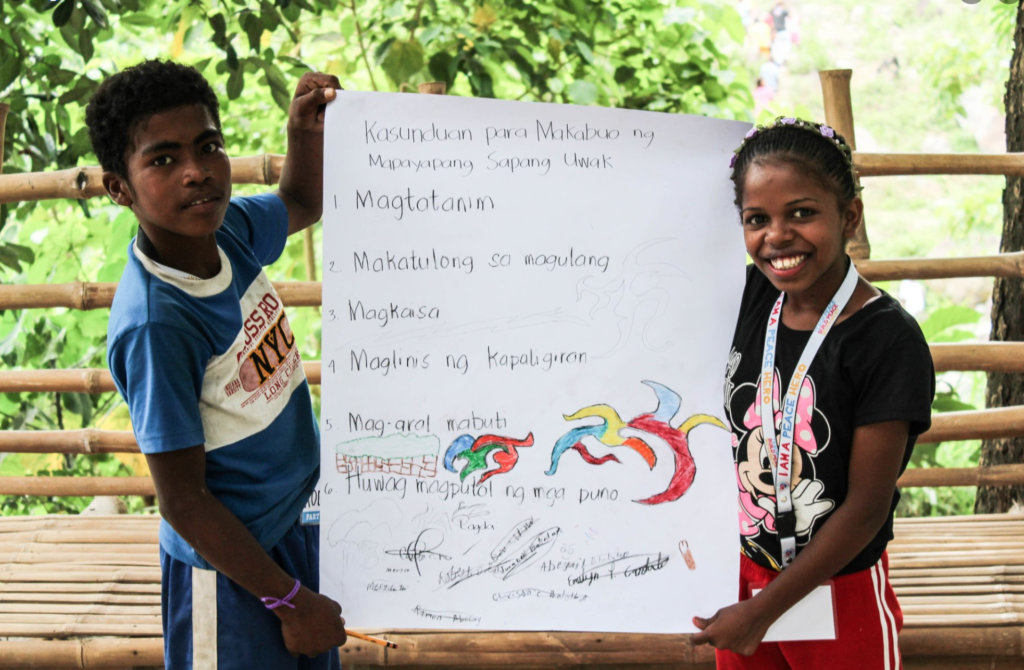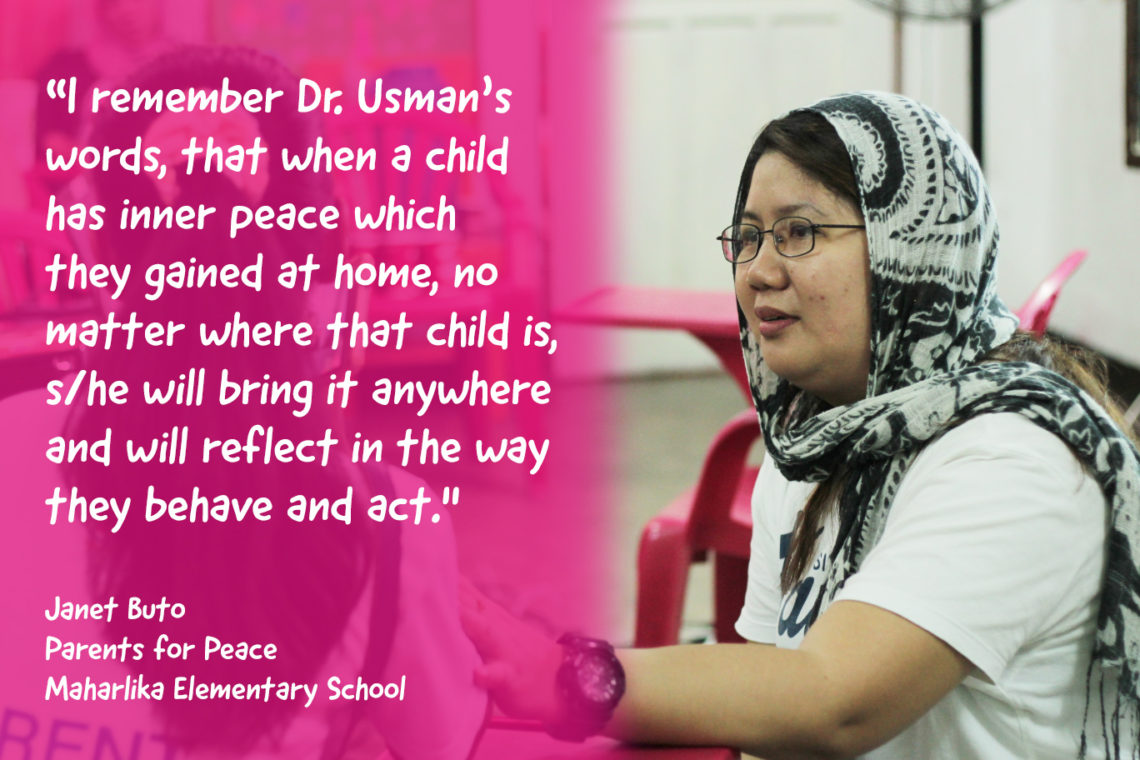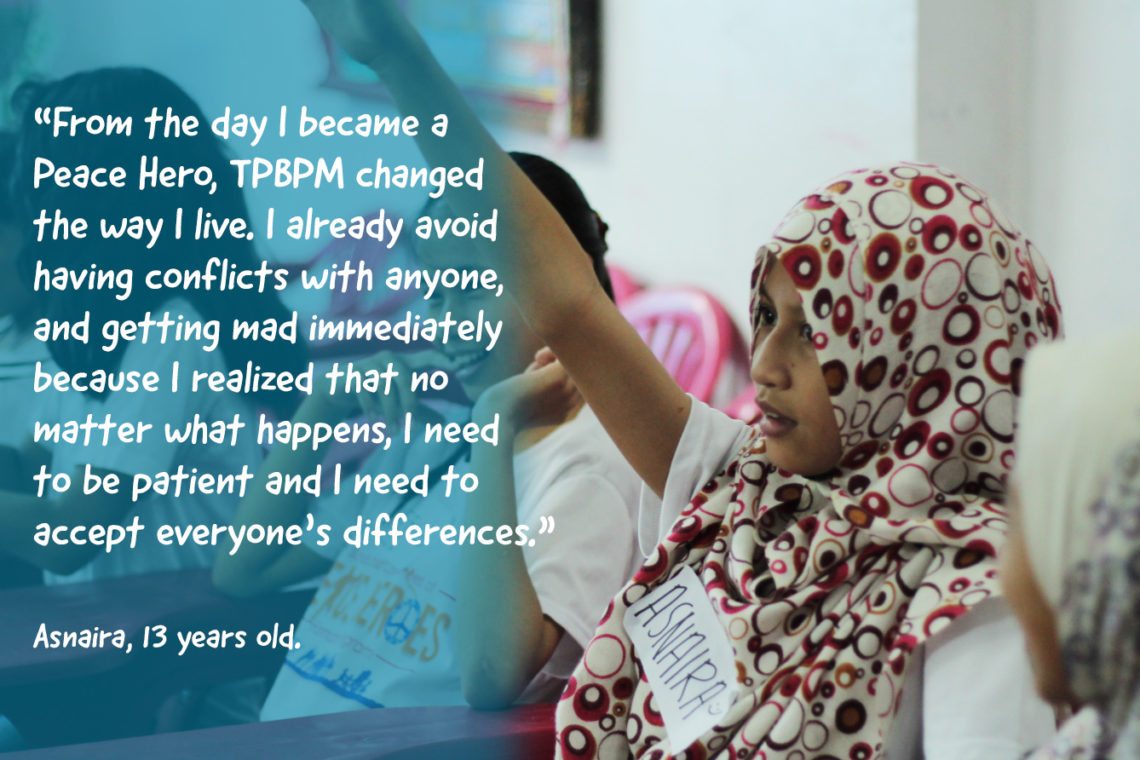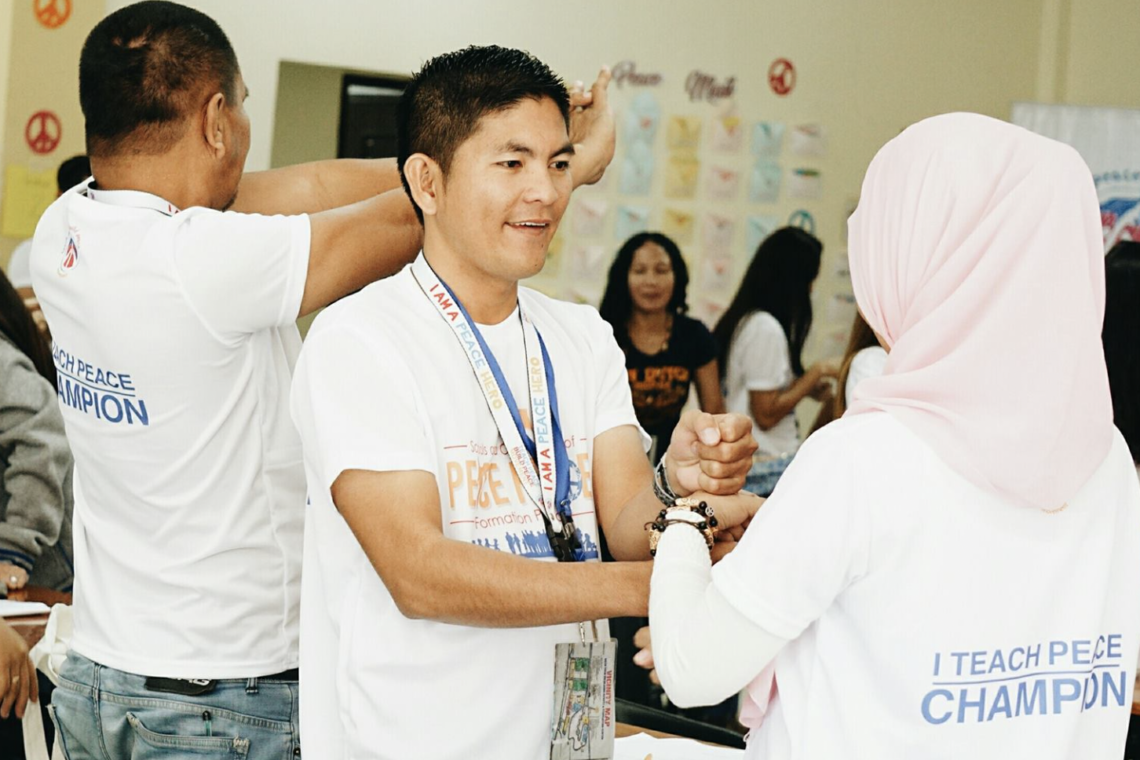What happens when art and peace intersect at one point? They form a more beautiful way to look at the world.
For Mojib Ampuan Launte, a student from Sultan Alauya Elementary School and a participant at the recently held Artists for Peace Mentoring Workshop, a visual arts session inspired him more to become a peace hero.
With neglected buildings as a common sight back in his hometown at Buadi Oloc, Ditsaan-Ramain, Lanao Del Sur, he hopes to restore them back to beauty by painting a big “I Am a Peace Hero” sign.
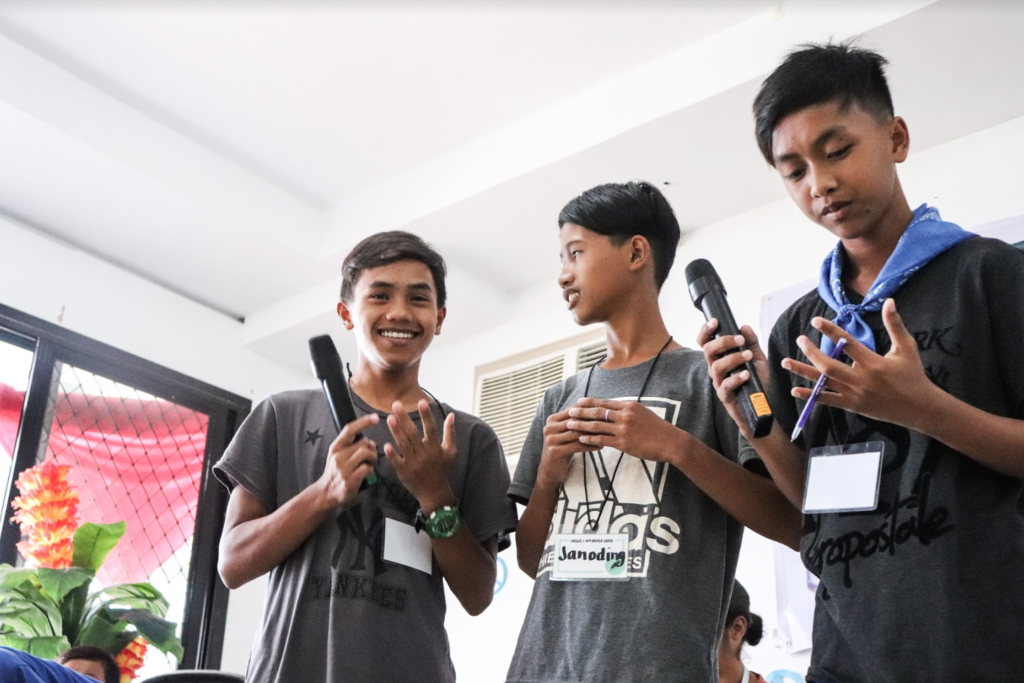
When asked what peace is for him, he shared, “It’s a way for people to see goodness.” And for a creative person like him, “Art is a good way to do it.”
Through the different creative sessions during the program, Mojib realized that peace is not the absence of war. Rather, it’s a way of life, and he sees it as a more beautiful concept now that he has learned more about it.
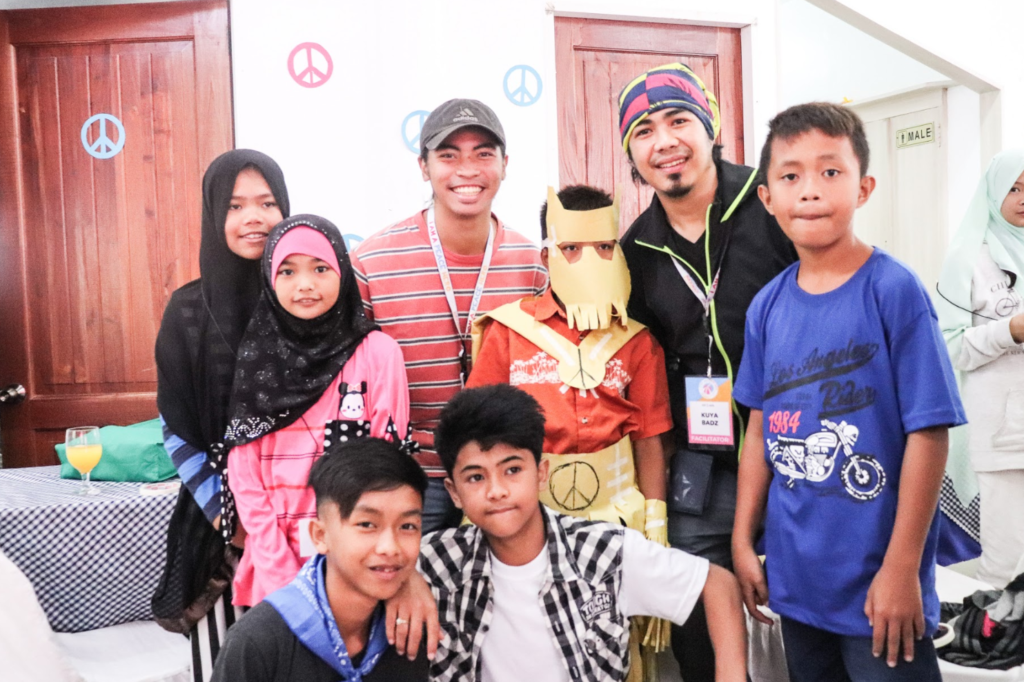
As he and his fellow participants embarked on their journey back home, he promised to help and respect others, knowing that by doing so, he’s contributing to making this world a more peaceful place to live in. “I will be respectful and kind,” he committed.
The Artists for Peace Mentoring Workshop dubbed as Peace Begins with Us: Our Peace, Our Pledge to Create a Peaceful Community is a mentoring workshop to show children and young people how art can be used in advocating for peace. This was developed by Teach Peace Build Peace Movement (TPBPM) for Pathways for Integrated and Inclusive Conflict-Sensitive Protection and Education for Children in Mindanao (iCOPE) Program, co-organized with Save the Children in partnership with Plan International and other members of the consortium.
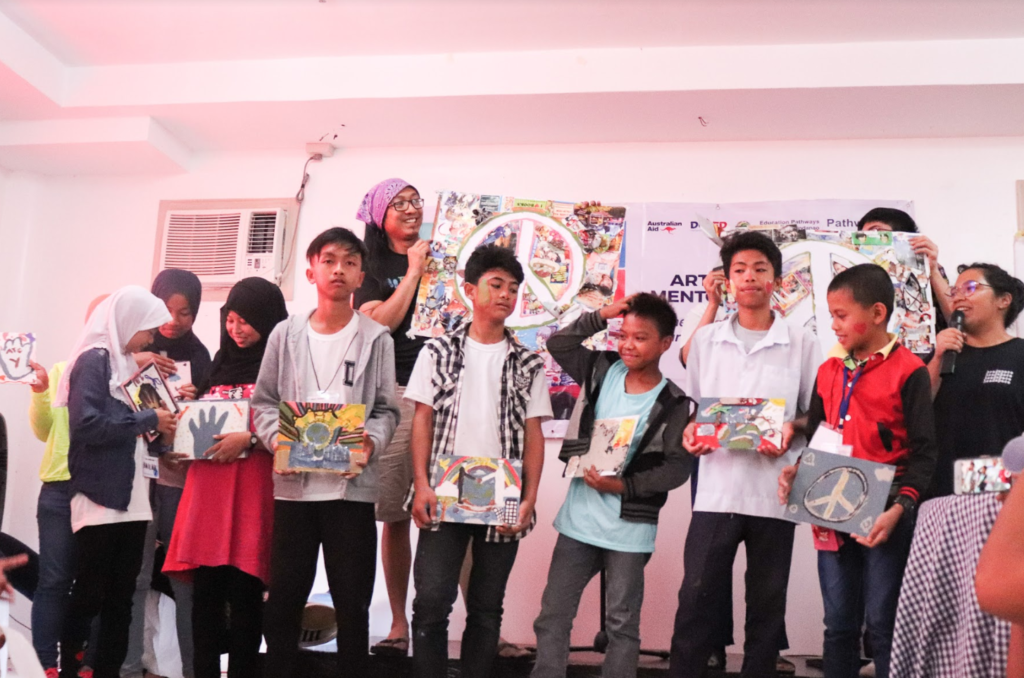
ABOUT ARTISTS FOR PEACE MENTORING WORKSHOP
The workshop was attended by a very diverse group, coming from different faiths and ages with various talents coming together to collaborate on how art can be a medium in advocating for peace. The mentees will be taught on how they can use art in creating awareness about how having peace with oneself can contribute to peace with others and how our peaceful thoughts and actions can create a ripple effect to having peaceful communities. The mentees shall undergo sessions that will also make them reflect on what sparks peace and joy to them, and what they can do to help create a peaceful community. Other group activities also promote social skills with an emphasis on the importance of peaceful co-existence and how everyone can be ‘peace heroes’ in their own ways.
ABOUT PATHWAYS FOR ICOPE PROGRAM:
Save the Children, in partnership with Plan International, is implementing a program called Pathways for Integrated and Inclusive Conflict-Sensitive Protection and Education for Children in Mindanao (iCOPE). This program aims to achieve a sustainable positive engagement, collaboration, and convergence of key actors and stakeholders in providing and supporting conflict-sensitive quality basic education services and protection.
As part of ICOPE Program, Teach Peace Build Peace Movement’s (TPBPM) Peace Heroes Formation Program (PHFP), formerly called Schools and Communities of Peace Heroes Formation Program will be introduced for the purpose of helping schools institutionalize Peace Education to nurture a Culture of Peace and Resiliency amongst children with the whole school community being involved.

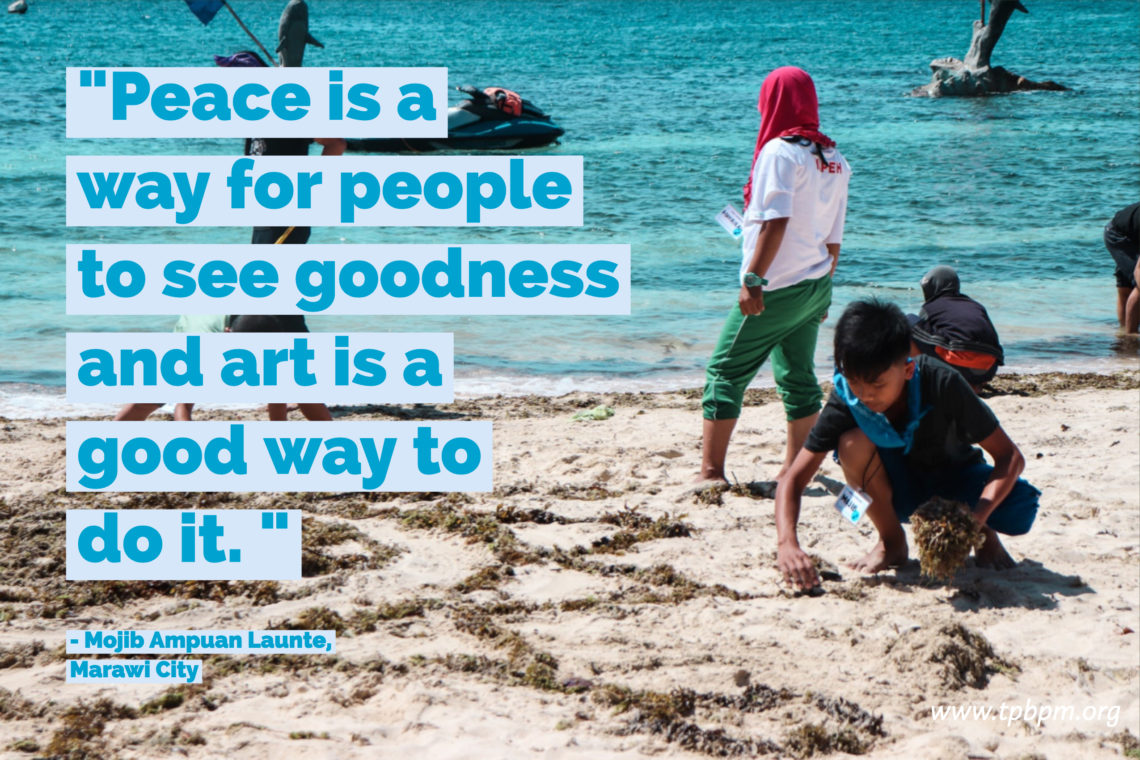
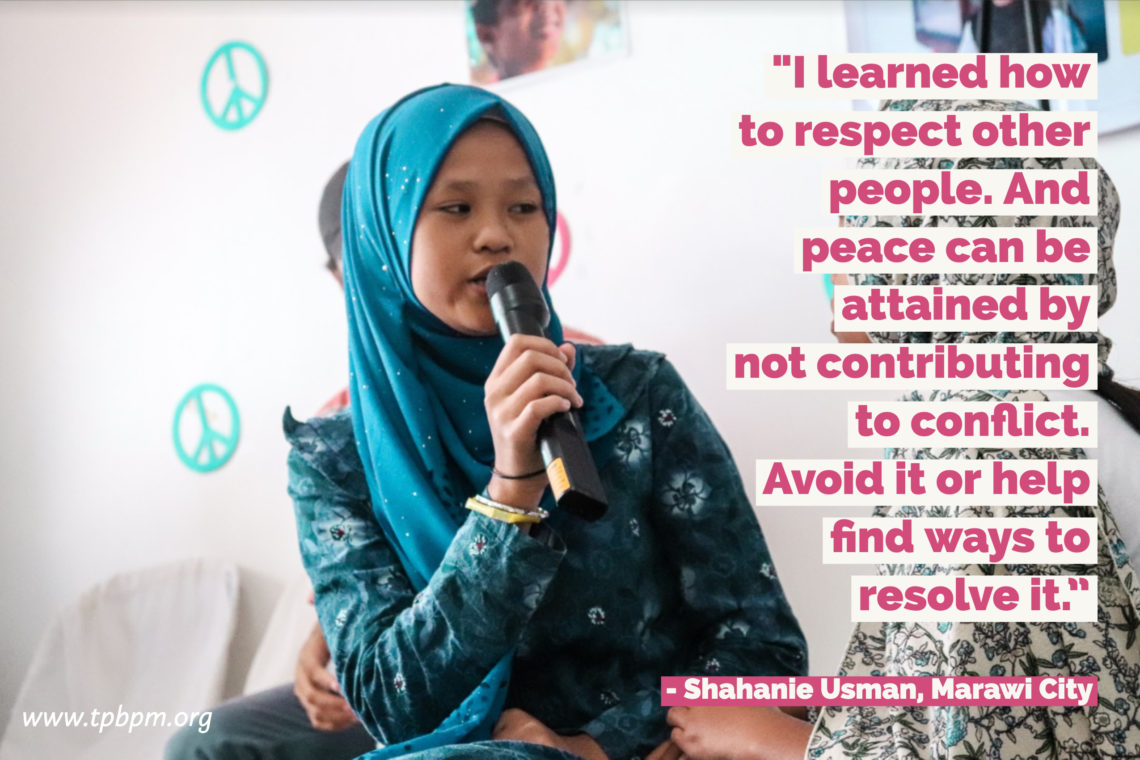
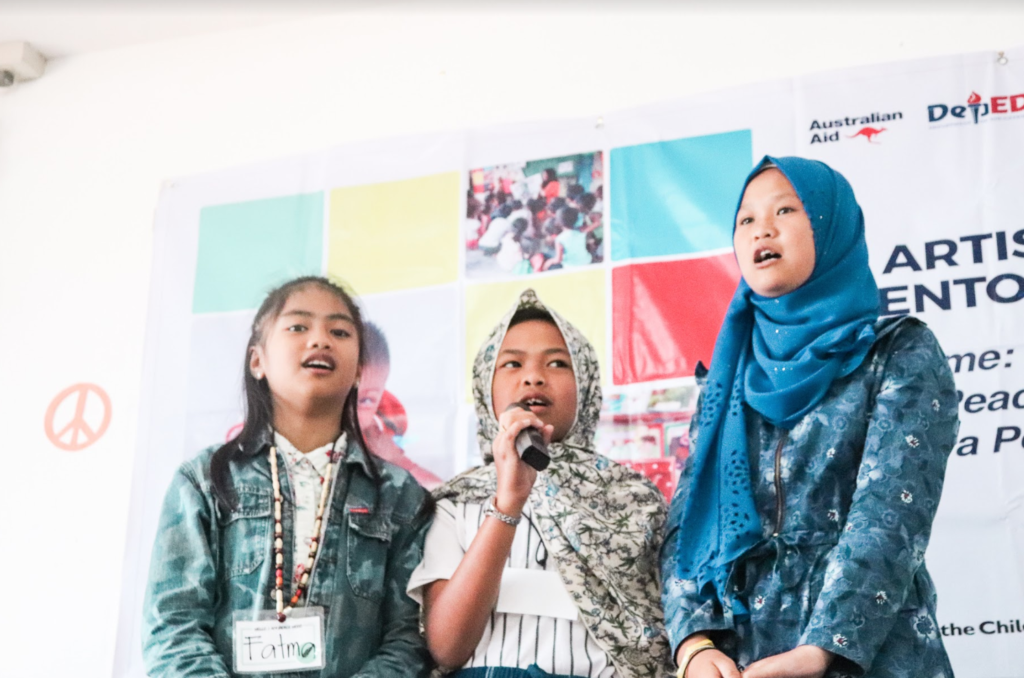
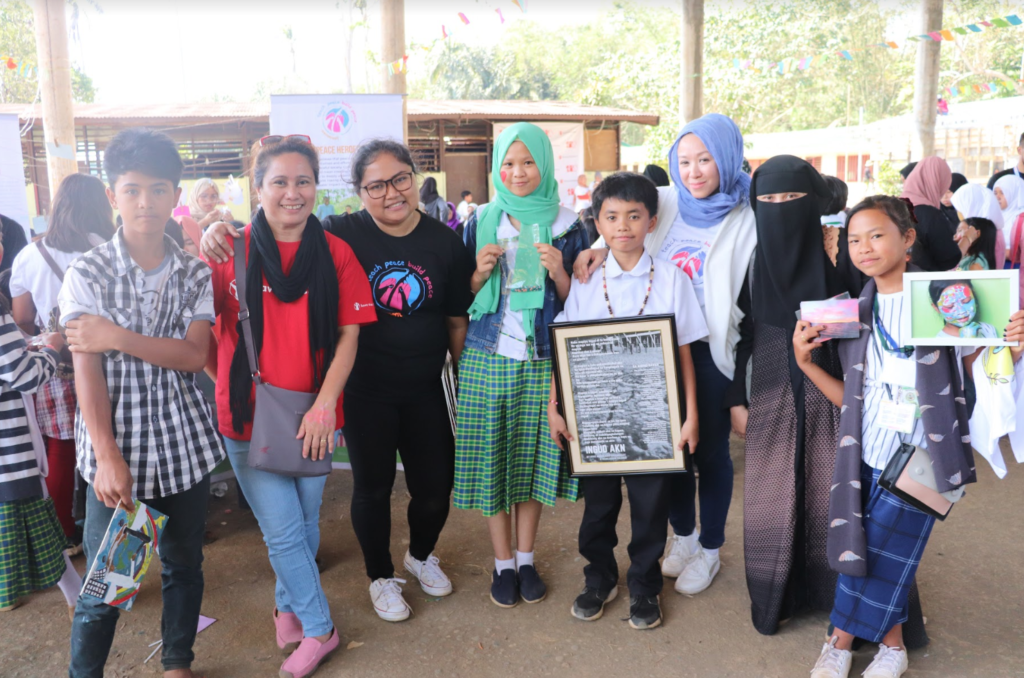
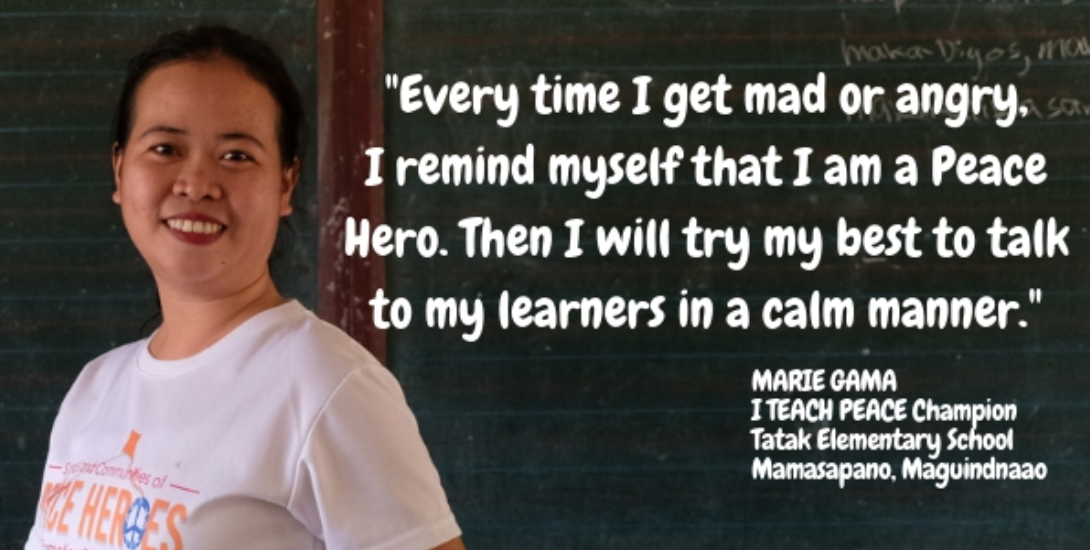

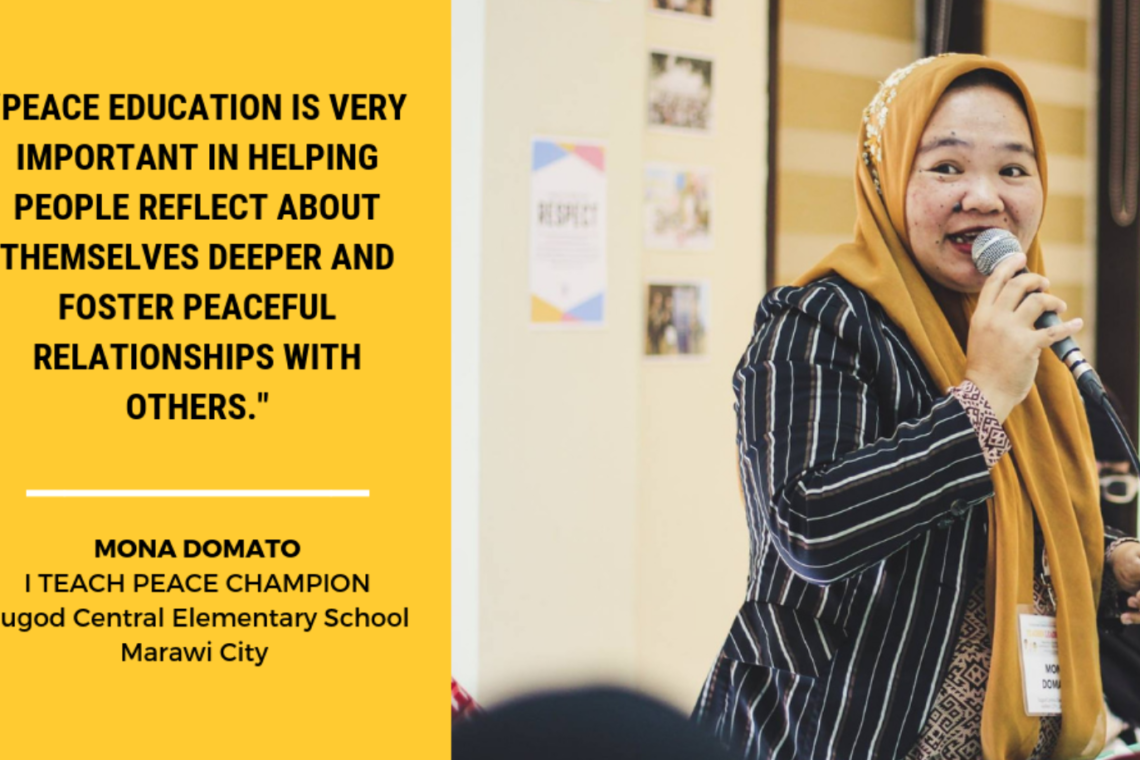
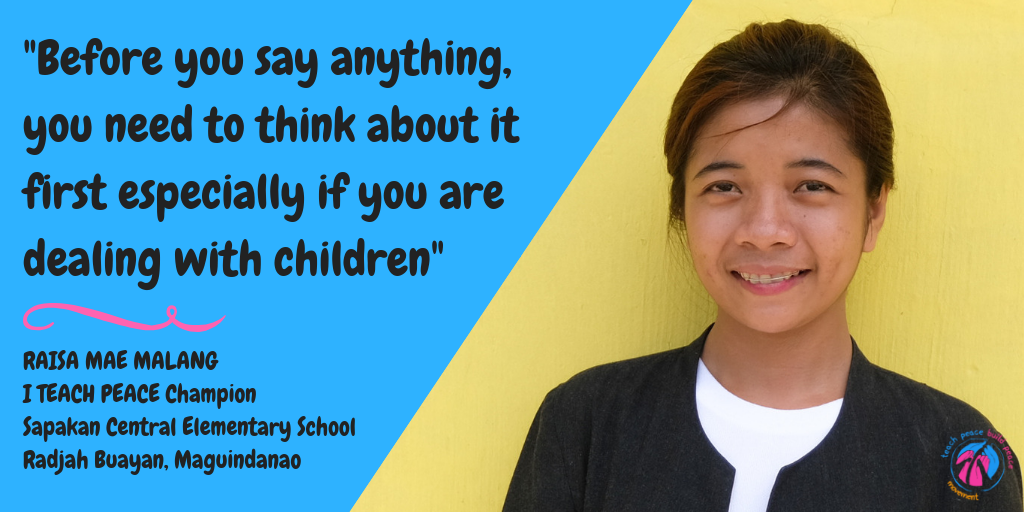
![“I now have a clear vision of what it [peace] is, of how I can apply it not just in my classroom but also in myself…”.png](https://teachpeacebuildpeace.com/wp-content/uploads/2018/10/I-now-have-a-clear-vision-of-what-it-peace-is-of-how-I-can-apply-it-not-just-in-my-classroom-but-also-in-myself…”.png)
